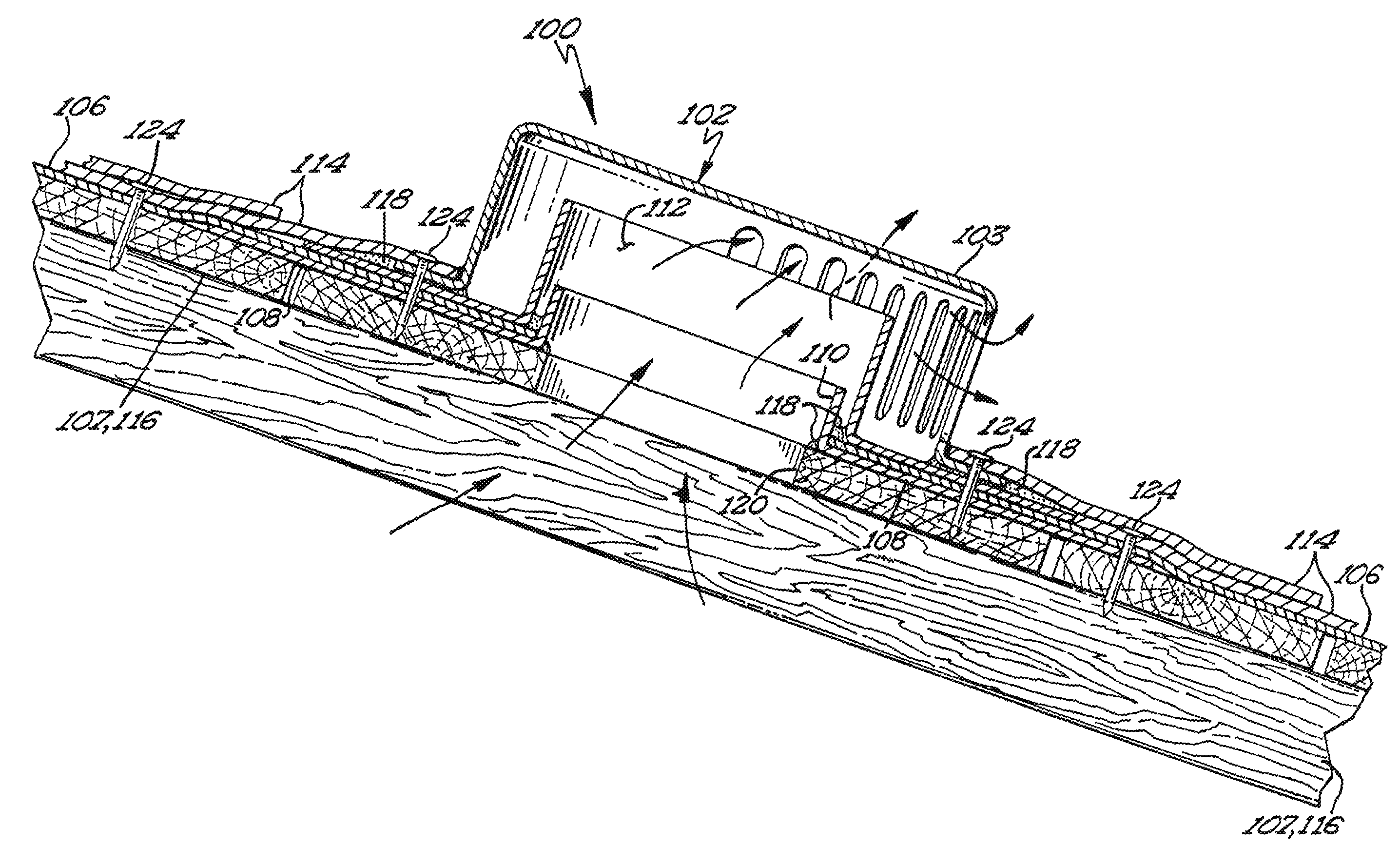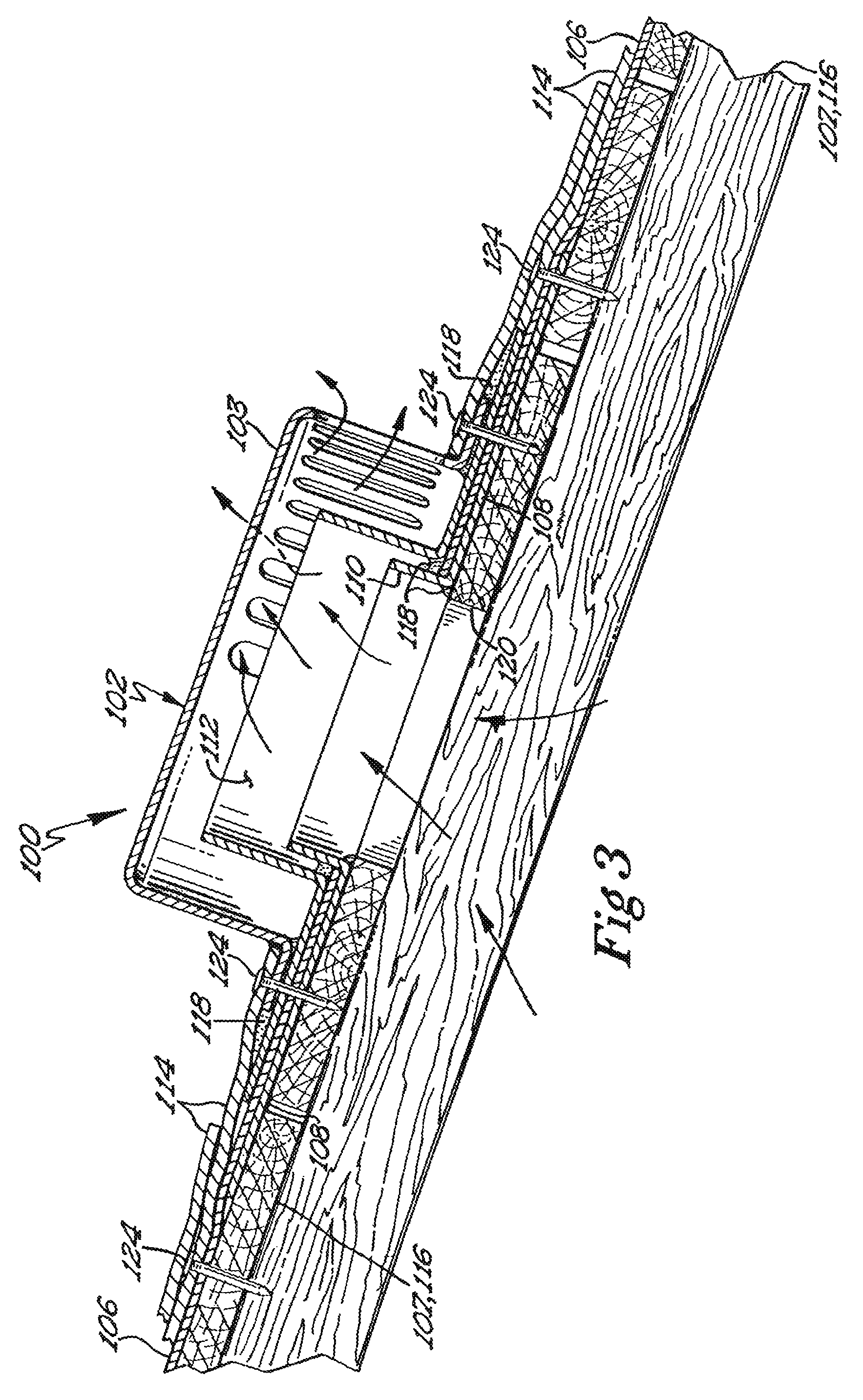Roof vent base plate and installation methods
a technology for venting and base plates, applied in ventilation systems, building repairs, heating types, etc., can solve the problems of increasing the likelihood of leakage at the central opening, and achieve the effect of preventing leakage and resultant property damag
- Summary
- Abstract
- Description
- Claims
- Application Information
AI Technical Summary
Benefits of technology
Problems solved by technology
Method used
Image
Examples
Embodiment Construction
[0023]The amount of water intrusion into our homes and businesses are at almost epidemic levels. Roof leaks have always been at the top of the list for a cause of water intrusion. A good roof system requires quality materials and detailed installation. Most roof leaks occur at the penetrations or vent caps in the roof. These penetrations being attic vents, plumbing vents, vent stacks for furnaces and fireplaces, bathroom vents and the like.
[0024]There are many different methods used when installing a roof-top vent caps. Sealants (e.g. tar, caulking and the like) and mastics (e.g. ice and water shield) are the practiced method used to make vent openings or roof exhaust sources leak-proof. The inventor has found that the use of sealants and mastics can be messy and can actually damage the roof system if not properly used. Moreover, these sealants and mastics can be subject to UV degradation. Expansion and contraction from weather extremes can further damage their effectiveness in prev...
PUM
 Login to View More
Login to View More Abstract
Description
Claims
Application Information
 Login to View More
Login to View More - R&D
- Intellectual Property
- Life Sciences
- Materials
- Tech Scout
- Unparalleled Data Quality
- Higher Quality Content
- 60% Fewer Hallucinations
Browse by: Latest US Patents, China's latest patents, Technical Efficacy Thesaurus, Application Domain, Technology Topic, Popular Technical Reports.
© 2025 PatSnap. All rights reserved.Legal|Privacy policy|Modern Slavery Act Transparency Statement|Sitemap|About US| Contact US: help@patsnap.com



